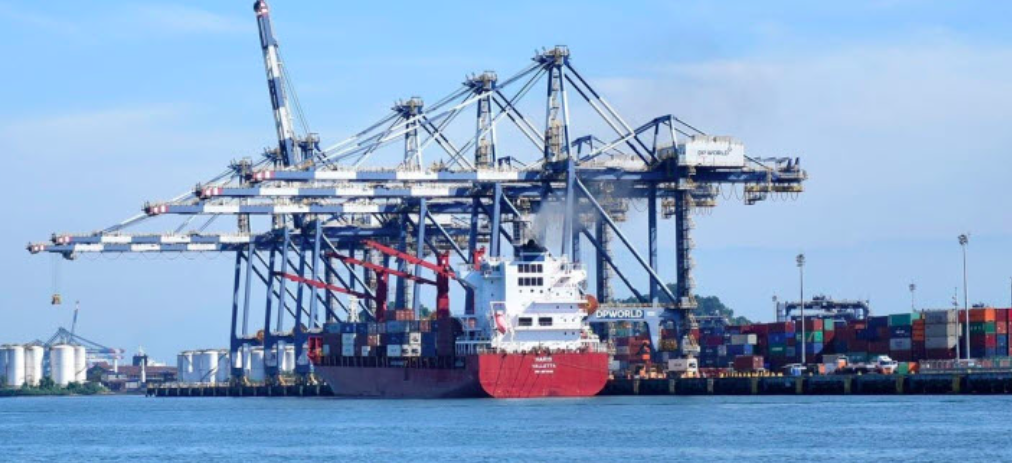Countries in eastern and southern Africa are receiving much larger illicit shipments of South American drugs than previously thought as global cocaine markets expand.
“Cocaine trafficking from Latin America through Africa has increased because the African continent is an excellent transit route,” said Carolina Sampó, coordinator of the Center for Transnational Organized Crime Studies in Argentina.
“In addition, the African continent is also gradually becoming an important consumption area due to pressure from drug exporters.”

Most drug shipments are shipped in containers from the port of Santos, Brazil.
In addition, there is a steady stream of human couriers transporting smaller quantities of drugs from Brazil’s major international airports, such as São Paulo Guarulhos Airport.
Most of these shipments end up in coastal countries such as South Africa, Mozambique, Kenya, and Tanzania.
They are then taken to other continents or inland, the Global Initiative against Transnational Organized Crime (GI-TOC), a Swiss-based nongovernmental organization (NGO) focused on organized crime, said in a December 2022 report.
“Originally, these routes were used by Colombian cartels to avoid payments to Mexican cartels,” Sampó said of the relationship between Latin America as a cocaine-producing region and Africa as a trafficking, storage, and consumption area.
“Collaboration began to develop between African and Latin American criminal organizations, leading to an increase in European consumption and the opening of new markets such as the Middle East and Asia.”
Cocaine traffickers regularly send large shipments to different countries in the region.
They do this in three ways: in containers, on ocean-going vessels such as fishing boats, and through drug smuggling from Latin America.
The nongovernmental organization’s research revealed several major ports of destination, including Durban in South Africa, Pemba and Nacala in Mozambique, Dar es Salaam and Zanzibar in Tanzania, Mombasa in Kenya, and Walvis Bay in Namibia.
According to InSight Crime, Nigerian drug traffickers have long dominated flows by sea and air since establishing outposts in São Paulo, Brazil, in the late 2000s.
By 2013, they were coordinating up to 30 percent of cocaine exports by boat or shipping container from the port of Santos, according to a report by the United Nations Office on Drugs and Crime (UNODC).
“Criminal organizations are co-opting African countries,” Sampó said.
“This creates greater incentives for Latin American drug traffickers, who consider this route less risky and more profitable than others, even if they have to negotiate some logistics with their African partners.”
According to Sampó, drug shipments can circulate in Africa because there are few controls in regions such as the Mali desert or the islands off Guinea-Bissau, where cocaine is transferred from large ships to speedboats that sail along the African coast.
GI-TOC highlighted that boats drop drugs “along the east and west coasts of South Africa, the north coast of Mozambique between Angoche and Pemba, the coastal waters of Zanzibar and Madagascar, the Kenyan coast from Kilifi to Lamu, and the coastal waters of the Somali-Kenyan maritime area.”
“Patrols at sea are very limited because government resources are scarce and also because public and private officials in these countries are corrupt,” Sampó said.
BRAZIL FIGHTS BACK
Brazilian authorities, however, have cracked down on drug trafficking targeting transatlantic routes from the port of Santos.
For example, in late October 2022, Brazilian Federal Police (PF) seized 125 kilograms of cocaine hidden in a shipment of ceramic tiles destined for African Sudan at the port of Santos, CNN Brasil reported.
Months earlier, the PF seized a record 1.5 tonnes of cocaine in two shipping containers, also at the Port of Santos, destined for Africa.
The PF also reported numerous seizures at airports of individuals attempting to smuggle cocaine into Africa.
According to G1, the PF seized 80.7 tonnes of cocaine at the Port of Santos between 2010 and 2019.
According to a report by the United Nations Office on Drugs and Crime (UNODC), seizures declined in subsequent years as transnational criminal organizations moved to smaller ports in Brazil.

